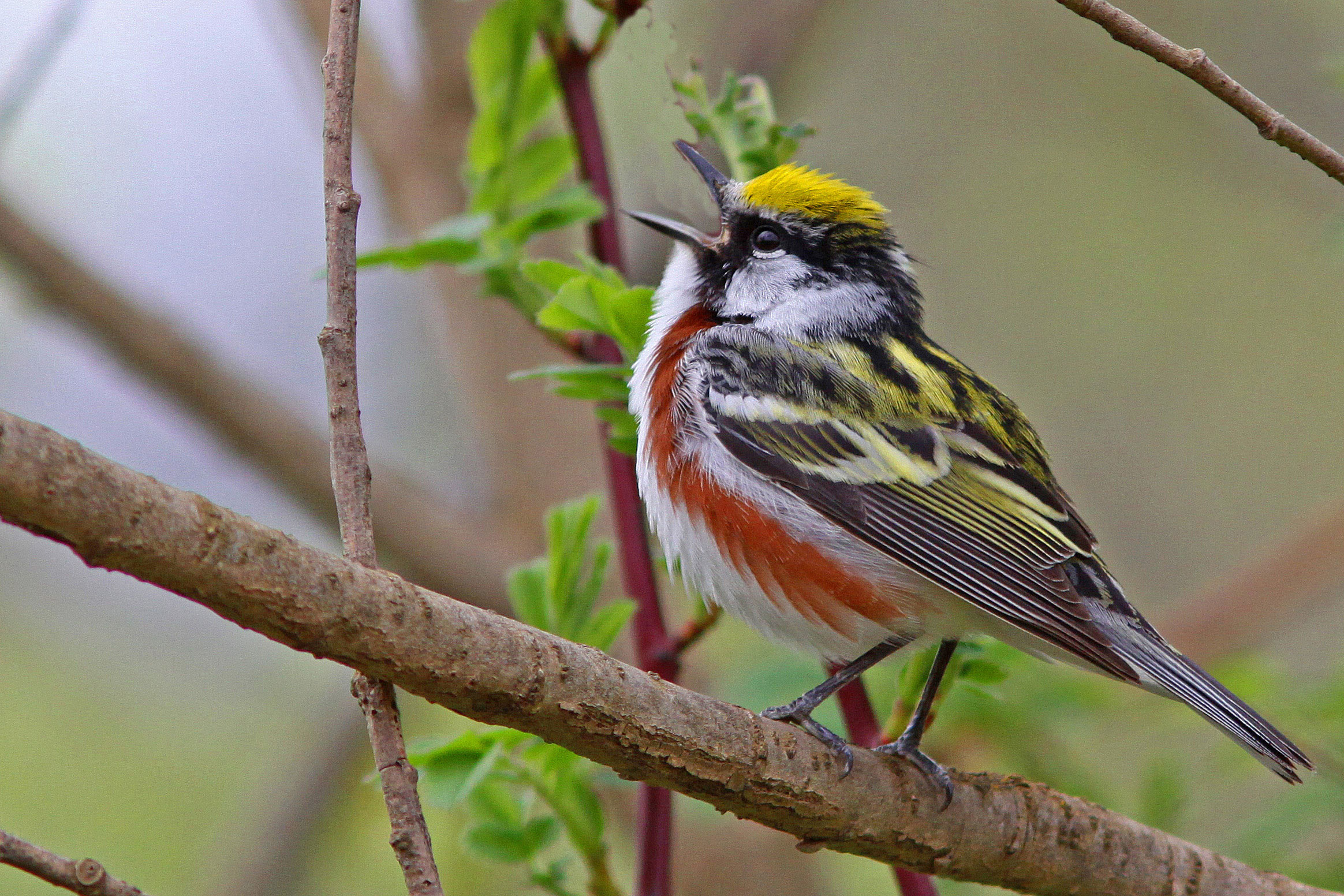The Evolution of the Checklist of the Birds of Thunder Bay District
Checklist of the Birds of Thunder Bay District, Ontario
373 Species of birds have been recorded in the Thunder Bay District to date. The Checklist of the Birds of Thunder Bay District, Ontario, was first made available in booklet form with the printing of the First Edition in 1986. The list comprised of 306 species of birds which had been recorded within the Thunder Bay District of Ontario as of August 1986.
The 1991 Second Edition contained 9 more species for a total of 315 recorded in the District as of January 1991. The new species added were Snowy Egret, Brant, Burrowing Owl, Carolina Wren, Sage Thrasher, White-eyed Vireo, Blue Grosbeak, Golden-crowned Sparrow and Orchard Oriole.
The 1998 Third Edition saw the addition of another 18 species for a total of 333. This checklist was up-to-date through the end of April 1998. Ivory Gull was added on the basis of a historical record from Schreiber.
The 2004 Fourth Edition includes noticeable sequence changes, some name changes and 13 new species. Cackling Goose was split from Canada Goose just after the new Checklist went to the printers. New species documented in the District brought the total to 346 species. The status and rarity codes were changed for a large number of species based on recent sighting information.
The 2011 Fifth Edition added 16 species to the list as of 31 December 2011. Since its publication another 8 species have been added to the list on the website.
The following is a chronological list of recent additions and changes to the Checklist of the Birds of Thunder Bay District.
New Species Added to the Checklist
Ancient Murrelet – December 16, 2023. Observed at Wild Goose Park, Shuniah.
MacGillivray’s Warbler – August 28, 2023. Banded at Thunder Cape Bird Observatory.
Mississippi Kite – June 21, 2023. Observed at Longlac.
Tropical Kingbird – October 18, 2022 to October 30, 2022. Observed at Pays Plat First Nation.
Cassin’s Kingbird – September 15, 2022 to October 23, 2022. Observed at Rossport.
King Eider – November 7, 2020. Observed at C3 Elevator at Fort William First Nation.
Lewis’s Woodpecker– June 9, 2016. Observed at feeder at Mountain Bay, Nipigon
Eurasian Tree Sparrow– May 18, 2014. Two birds at Terrace Bay
Mew Gull– May 13, 2014. Observed at Pass Lake
Slaty-backed Gull– November 6-11, 2013. Observed at the Thunder Bay Solid Waste and Recycling Facility
Anna’s Hummingbird– September 19-December 7, 2013. Coming to a Thunder Bay feeder
Arctic Tern – May 23, 2013. Observed at Hurkett
Sulphur-bellied Flycatcher– September 30, 2010. Banded at Thunder Cape Bird Observatory
Black Vulture– June 8, 2010. Observed at Thunder Cape Bird Observatory
Changes in Taxonomy and Nomenclature by the American Ornithologists’ Union (AOU)
Note: Only changes affecting the Checklist of the Birds of Thunder Bay District are included. Changes in Latin names (species or genus) are not included.
The current standard is the 7th Edition of the American Ornithologists’ Union Checklist of North American Birds and it’s supplements, first published in 1998. The 7th Edition contained major sequence changes from the previous edition.
Fifty-Ninth Supplement, 2018
- Gray Jay name change to Canada Jay
Fifty-Eighth Supplement, 2017
- Thayer’s Gull now a subspecies of Iceland Gull.
Forty-Ninth Supplement, 2008
- Green Violet-ear was renamed Green Violetear.
Forty-Fifth Supplement, 2004
- Cackling Goose became a separate species instead of being a subspecies of Canada Goose. Major sequence changes were made based mainly on DNA evidence.
Forty-Fourth Supplement, 2003
- Rock Dove was changed to Rock Pigeon.
- Three-toed Woodpecker became American Tree-toed Woodpecker
Forty-Third Supplement, 2002
- Common Snipe was split into Wilson’s Snipe and Common Snipe, Wilson’s being the species found in the Thunder Bay District. Common Snipe is found in the old world.
Forty-Second Supplement, 2000
- Oldsquaw was changed to Long-tailed Duck to concur with world-wide usage.
- Bullock’s Oriole was moved ahead of Baltimore Oriole on the list.
Various supplements to the 6th Edition of the American Ornithologists’ Union Checklist of North American Birds (published in 1983) have included the following changes:
Forty-First Supplement, 1997
Ross’ Goose was renamed Ross’s Goose.
- Lesser Golden-Plover was revised to American Golden-Plover and Pacific Golden Plover (not on the Thunder Bay District checklist).
- Solitary Vireo was split into Blue-headed Vireo, Cassin’s Vireo and Plumbeous Vireo, of which the Blue-headed Vireo is the only one occurring in the District of Thunder Bay.
- Harris’ Sparrow was renamed Harris’s Sparrow.
Fortieth Supplement, 1995
- Rufous-sided Towhee was split into Eastern Towhee and Spotted Towhee, both of which are considered rare in the Thunder Bay District.
- Sharp-tailed Sparrow was split into Saltmarsh Sharp-tailed Sparrow and Nelson’s Sharp-tailed Sparrow. (Nelson’s is on the District list).
- Northern Oriole was split back to Baltimore Oriole and Bullock’s Oriole, both of which are considered rare in the Thunder Bay District.
- Bullock’s Oriole is added to the list based on a photographic record from 1977.
Thirty-Ninth Supplement, 1994
- Green-backed Heron was renamed Green Heron.
- Rosy Finch reverted back to three species, of which the Gray-crowned Rosy Finch is on the District list.
Thirty-Seventh Supplement, 1989
- Northern Hawk-Owl was renamed Northern Hawk Owl.
- Water Pipit was renamed American Pipit.

